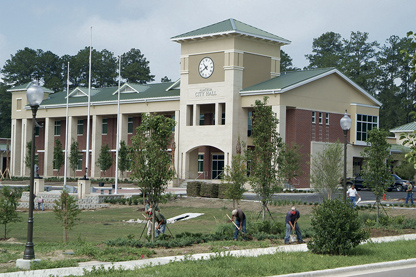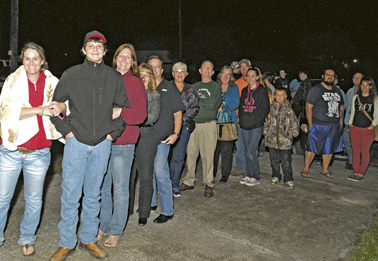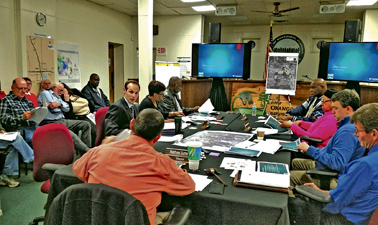
Alachua County Today file photo
Alachua City Hall, a component of Alachua's Municipal Complex, is a reminder of the City of Alachua's nearly 10,000 population and its place as the second largest municipality in the county.
ALACHUA – A cemetery, a dirt road, and a Florida Historical Marker are all that note the existence of the first major city in Alachua County.
Forest, mobile homes and houses now reside nondescriptly on most of the land that was once Newnansville, the first Alachua County Seat and metropolitan hub in North Central Florida.
Newnansville sprang up in the early 1820s on the first major transportation route to cross Northern Florida, the Bellamy Road, which also doubled as the town’s Main Street, remnants of which still exist in part as a private dirt road.
It became the center for trade, local plantation commerce and government in the area, then later a refuge for settlers during the Second Seminole War with the construction of Fort Gilleland within its borders.
By slim margins, leading county residents voted to move the county seat to the newly-created town of Gainesville in 1853 because it was plotted on the first major railway to pass through the county.
When the Savannah, Florida and Western Railway completed a new line to Gainesville about a mile and a half southwest of Newnansville in 1884, residents and businesses began to migrate to the new transportation hub.
So it was that Newnansville was slowly abandoned and the City of Alachua created in its stead, leaving Alachua as the inheritor of its history and tradition.
Alachua is the second largest community in the county, with a population of approximately 9,000 as of the 2010 U.S. Census.
It self-identifies as “The Good Life Community," and when it comes to recreational departments, that is surely the case.
Alachua has one of the area’s more extensive recreation programs, with facilities that range from the Hal Brady Recreation Complex to a downtown baseball field to four neighborhood parks and a Splash Park.
“I’ve lived here for 41 years, and the best thing I ever did was move here,” Alachua Mayor Gib Coerper said.
Mayor Coerper said the underlying motivation for many Alachua residents has been to have a self-sufficient community.
“The universal want here has always been to be able to live, work and play in Alachua,” he said.
Dating back to the town’s relocation from Newnansville to its present site, Mayor Coerper stated that economic prosperity has long been a major priority for the city.
“Alachua has always been a business-minded community,” he said. “It was started by business people and is why it became so successful.”
He also noted that Alachua is not negligent of its land and heritage, highlighting the over 1,000 acres of environmentally-sensitive land the city has set aside over the past six years as well as the importance of the city’s Downtown Historic District.
Part of Newnansville’s legacy, however, is not positive. As in most small Southern towns (indeed, in every community in Alachua County), vestiges of segregation still exist in the form of distinct sections of the city split between predominantly “white” and “black” populations.
As underscored by Mayor Coerper, leading residents of Alachua still respond to the entrepreneurial drive that motivated their forebears to leave home for economic opportunity: Alachua actively seeks to attract businesses within its borders, having welcomed the Progress Corporate Park and Dollar General and Wal-Mart Distribution Centers within the past 30 years.
Perhaps in a related way – and somewhat distinctly from most Alachua County communities – Alachua emphasizes community growth more through new expansion and construction than historic or cultural preservation.
The newly-approved master plan for the vast Legacy Park; recent construction of the new City Hall and Police Department complexes; the just-completed Publix shopping center; and the long-disputed proposed Wal-Mart Supercenter are all evidence of the former.
Alachua has at least one potential opportunity for more of the latter: the Newnansville Town Site itself – though technically just outside the Alachua city limits and already listed on the National Register of Historic Places – remains an untapped cultural and historical goldmine, with incredibly little archaeological work having been performed or even attempted on one of Florida’s earliest and least-disturbed pioneer settlement sites.
Contingent on the approval of the property owners of the several parcels that comprise the site, perhaps Newnansville still has lessons left to teach.
# # #
Email Dwisener@
alachuatoday.com








